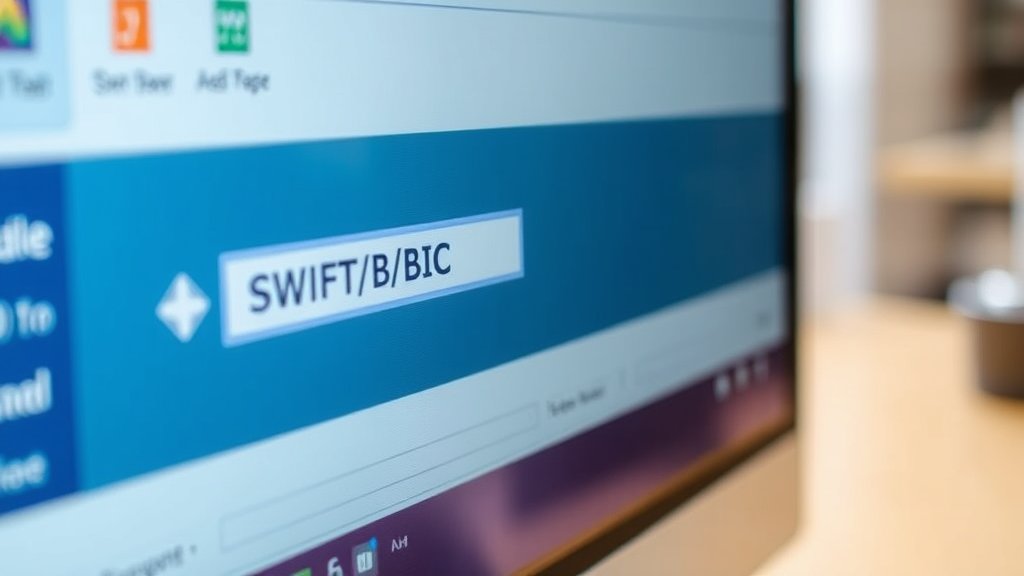International banking can feel like navigating a labyrinth, but understanding key elements like SWIFT and BIC codes can make the journey much smoother. These codes are the unsung heroes of global finance, ensuring your money lands exactly where it’s supposed to, no matter how far it travels.
The role of swift codes
SWIFT codes, or Society for Worldwide Interbank Financial Telecommunication codes, are integral to the world of international banking. Think of them as the postal codes for banks, guiding your funds safely across borders. Each SWIFT code is distinct, pinpointing a specific bank and sometimes even a particular branch.
Without SWIFT codes, the complexity of international transactions would skyrocket. Imagine trying to send money overseas without a precise address – it’s a recipe for chaos. These codes streamline the process, reducing errors and ensuring that funds don’t get lost in transit. They are essentially the backbone of secure and efficient global banking.
Interestingly, while most people may never need to know their own bank’s SWIFT code, those who do business internationally or send money abroad regularly rely on them heavily. It’s one of those things that works quietly in the background but is absolutely essential when you need it.
How bic codes simplify transactions
BIC codes, or Bank Identifier Codes, often get mentioned in the same breath as SWIFT codes. That’s because they’re essentially two sides of the same coin. In fact, a SWIFT code is technically a type of BIC code. Confused yet? Don’t be. The primary job of both is to provide precise identification for banks involved in international transactions.
The beauty of BIC codes lies in their simplicity and functionality. By providing clear and concise identifiers, these codes help minimize errors in transactions, as seen with the bic code regiobank. This means fewer delays, lower costs, and much less frustration all around. For anyone who’s ever had an international payment go awry, that’s no small thing.
Moreover, BIC codes are part of a larger system designed to foster trust and reliability in the financial world. Knowing that there’s a standardized method for identifying banks can put one’s mind at ease when dealing with international finances.
Why regional banks need swift/bic codes
Even regional banks find themselves needing SWIFT/BIC codes in today’s interconnected world. With globalization, more people are conducting business across borders than ever before. Whether it’s a small business owner importing goods or someone sending money to family overseas, regional banks must facilitate these international transactions smoothly.
For regional banks, having a SWIFT/BIC code isn’t just about keeping up with the big players. It’s about offering their customers the same level of service and security that international banks provide. It ensures that funds sent from a local bank in a small town can reach a recipient halfway across the world without a hitch.
This global reach is crucial for maintaining competitiveness in the banking industry. Customers expect their banks to handle international transactions with ease – anything less can lead to dissatisfaction and loss of business. So even if it’s just a tiny regional bank, having a SWIFT/BIC code is non-negotiable.
Real-world examples and success stories
Take the example of a small business owner named Maria who runs an artisan cheese shop in Vermont. She sources specialty ingredients from Italy and needs to make regular payments to her suppliers there. Thanks to her bank’s SWIFT/BIC code, she can make these transactions seamlessly and focus on what she does best – creating delicious cheese!
Or consider John, an expat living in Tokyo who needs to send money back home to his family in Canada. With his bank’s SWIFT/BIC code, he can transfer funds quickly and securely without worrying about delays or lost money. It makes living abroad just a little bit easier when you know your finances are under control.
These real-world examples highlight just how vital SWIFT/BIC codes are in our daily lives. They may not be something we think about often, but they play a crucial role in making our global economy work.
Tips for finding and using your bank’s swift/bic code
If you ever need to find your bank’s SWIFT/BIC code, there are several ways to do it. Most banks list their codes on their websites or can provide them over the phone. It’s also often found on your bank statements or within your online banking portal.
Using these codes is usually straightforward once you have them. When making an international transaction, you’ll typically be asked for your recipient’s bank details along with their SWIFT/BIC code. Entering this information correctly ensures your money gets where it needs to go without unnecessary delays.
In short, while SWIFT and BIC codes might seem like minor details in the grand scheme of things, they are fundamental to the smooth operation of international banking. Understanding their role can demystify the process and make managing cross-border finances just that little bit easier.




